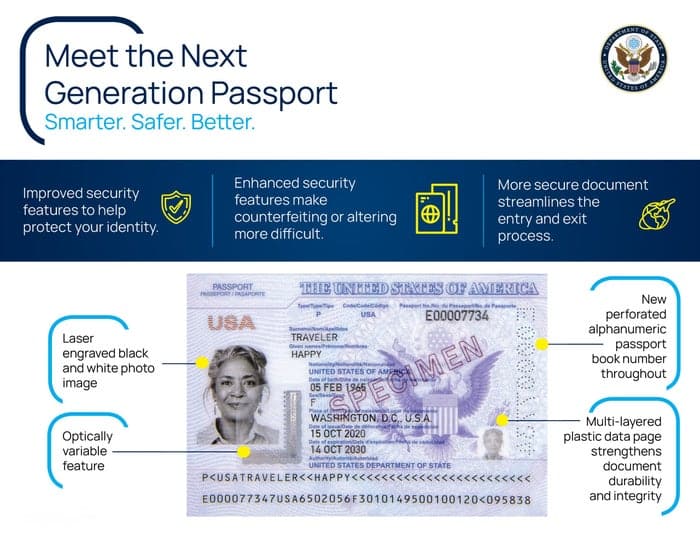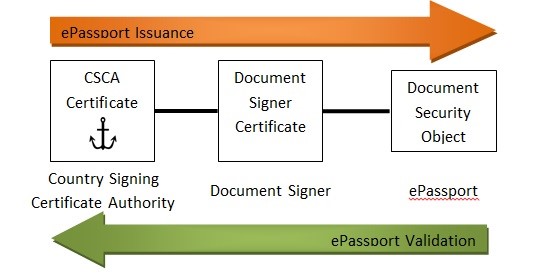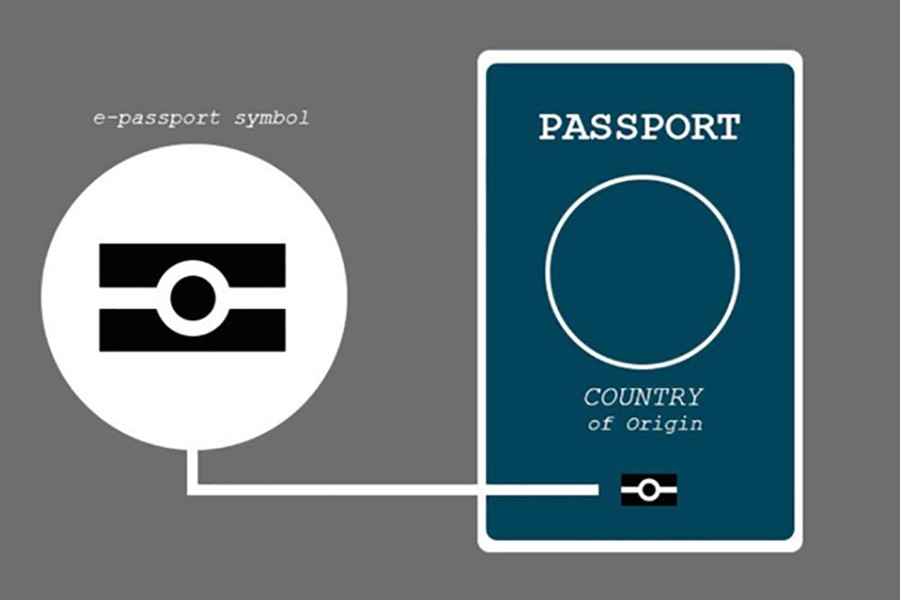e Passports make flying Safer
The e Passport holds physical as well as personal information about you. But that’s all it has, and this information is better protected than your bank details. The e-passport is an evolution of how security stakeholders identify you as being you.
If you only have a minute
Key Features of the ePassport Chip:
Data Replication: The ePassport chip replicates the same data that you find visually displayed on the data page of your passport. This is your name, date of birth, nationality, and passport number.
Digital Image Storage: The chip securely stores a digital version of your passport holder picture.
Unique Chip Identification: Each ePassport chip is equipped with a unique identification number.
Digital Signature: For data integrity, a digital signature is included within the chip.
Government-Specific Data: Specific issuing governments include additional data as per their requirements and policies.
These standards for ePassport’s have been meticulously defined and established by the International Civil Aviation Organization (ICAO). They serve as a universal benchmark, guiding all countries that implement ePassport’s towards a standardized and secure travel experience.
Recognition of an e-Passport
Easily identifying an ePassport is made straightforward through the internationally recognized symbol prominently featured on its front cover. This symbol, meticulously defined in the ICAO Doc 9303 Machine Readable Travel Document specification, serves as a clear marker, distinguishing the passport as an ePassport. Notably, this symbol is not only present on the passport itself but is also displayed at border crossing stations equipped to process ePassport’s.

International Electronic Passports
ePassport Validation: Keeping Travel Secure
ePassport validation ensures your passport is real and hasn’t been tampered with. It’s essential for secure travel, and it doesn’t share your personal information.
How It Works:
- When border authorities check your ePassport, they confirm it was issued by a legitimate authority.
- They make sure the information in your passport hasn’t been changed.
- They check that the electronic information on your passport’s chip isn’t a copy.
By verifying your ePassport’s chip, border control can trust the information inside. They compare it to what’s printed in your passport, like your picture and personal details. Any differences raise suspicion.
ePassport validation is vital for safer travel. It’s used worldwide and helps protect everyone’s security. While there are different ways to do it, using ICAO PKD is the best choice for timely and reliable information exchange.
How e-Passports Simplify Travel
The shift to digital documents isn’t limited to driver’s licenses. One such digital transformation is the advent of Digital Travel Credentials. This innovative concept, born from Australia’s Department of Foreign Affairs and Trade’s Ideas Challenge in 2015, has gained global attention, endorsed by the International Civil Aviation Organization (ICAO).
The Vision: Effortless and Secure Travel
Digital Travel Credentials aim to store passport information and biometrics in the cloud, enabling paperless travel between Australia and New Zealand. Let’s explore its potential through two key scenarios:
Scenario 1: Lost Passport Abroad
Imagine losing your passport during your travels. In this situation, your consulate or embassy can activate a digital copy on your mobile phone, securely retrieved from government servers. This digital version matches the security of your lost passport’s data, providing a more secure alternative to conventional emergency travel documents.
Scenario 2: Visa Applications Simplified
Typically, visa applications require in-person visits to consulates, as your physical passport must be presented. With Digital Travel Credentials, passport data can be seamlessly transferred between the issuing authority and the visa office. This accelerates the visa process, enhancing data trust. In the future, advancements in ePassport specifications may allow visa downloads via mobile phones, expediting entry upon arrival. This streamlined approach also boosts pre-travel authorization confidence.
Recognizing these advancements, the ICAO established a sub-group dedicated to digital travel credentials in June 2016, acknowledging their alignment with next-generation ePassport’s.
How e Passport Security Measures Work
Since 2010, e passports are now the gold standard. And when you finally trick your wife into believing that trip to Las Vegas is indeed a “normal vacation”. Then since 2016 you will need a biometric passport to gamb…—, I mean gain entry to the U.S.A.
So, here’s the skinny on that biometric passport. And how layers of security mean it’s not possible for anyone (or any other device) to read that chip. Other than those nice men and women at the DHS.
The NFC Chip and Security
Your e-passport has a readable near-field communication chip. It can only be scanned by secure, pre-approved devices within only 4cm of your document. Just like your credit or debit cards. This chip contains the biographical data from page 2 of your passport that is located on the bottom typeface lines below your photograph.
This chip also has a digital copy of your photograph. Which is why they make you take super specific selfies and refuse it if you crack a smirk. It also captures details of your eyes (specifically the iris) and your fingerprints.

One Big Border
Let’s nip this one in the bud right now. I don’t mind a cool conspiracy theory just like the next reptilian overlord but let me give you some pause for thought. One, there are bad actors out there. Now-now, as I write this. Trying to find any way to get their causes into the news. Aviation and its key infrastructure have long been a way to do that.
There are much fewer terrorist attacks on trains or ship ferries than commercial aircraft. And when you are stuck in line at JFK for 3 hours wondering what takes so long, these electronic chip devices and other technologies are trying to get you through the airport as quickly as possible while they attempt to spot these people.
Given the critical job homeland security needs to perform, this electronic chip technology should help stop bad people escaping their own country and travelling undetected to our border to inflict pain and misery onto unsuspecting citizens. The e-Passport makes this impossible for them to do that.
The Trust Chain – CSCA and DSC Program
There is an approved system by which each country obtains their populations data for e-passport services to be validated by other countries border patrol officers. Each country has a CSCA – a country signing certificate authority. A state body – not a private entity or Facebook – your government.
This CSCA together with a document signer certificate forms the trust chain that underpins the security of important documents such as your e-Passport. And this chain is responsible for the production of what they deem the “document security object”, in our case the ePassport. So, like a mini-blockchain, when you arrive at another country’s border control, staff can not only validate the bearer, but it can also check how and by whom this ePassport originated. It is also called the country signing key.

e Passports Safety - Chains can be broken
Yes they can.
That is why we also have CRL’s, or certificate revocation lists. This process allows countries to revoke certificates that may have been compromised or just to implement stopgaps to make falsification more difficult. This makes your biometric passport an active, working document that can ctrl-al-delete its security if it needs to.
Moreover, each country shares with each other these CSCA and DSC lists making it infinitely more difficult to compromise. As these systems grow, however, it has become cumbersome and complex, however our good friends at ICAO have found a solution. They now have the ICAO PKD – the public key directory. This directory will hold all pertinent data for each country and allow a secure, accessible pivotal point of verification for every state that is participating in the scheme. This is now 150+ countries and at last count, more than 500 million ePassport holders.
Who can read e Passport chips?
If you want the full rundown of the security chip just click here.
But no. To read the NFC Chip, the passport data page on the passport itself must be read by an authorized machine first. Then and only then will the NFC chip allow the electronic data to be scanned by that very same device.
From a GDPR perspective this correctly assumes that you have handed your ePassport willingly to the border officer for the purposes of doing exactly that. He then uses his approved device to first read the document page, this releases the functionality of the biometric chip. Only this device, with its state approved and securely controlled approvals can read the biometric chip and use it for validation purposes.
Digital Photograph - Polycarbonate
Polycarbonate, a robust and versatile material, plays a pivotal role in the manufacturing of e-passports, contributing to their durability, security, and overall functionality. In the realm of modern travel documents, e-passports have become a technological marvel, and the use of polycarbonate is a key factor in their success.
One of the standout features of polycarbonate is its exceptional durability. E-passports are subjected to various environmental conditions, from extreme temperatures to moisture, and even the wear and tear associated with frequent travel. Polycarbonate provides a protective shield for the electronic components within the passport, ensuring that the critical information stored in the chip remains secure and intact. Moreover, polycarbonate enhances the longevity of e-passports, reducing the need for frequent replacements and minimizing the associated costs for both travelers and issuing authorities.

U.S. Customs and Border Protection
The officer can then easily verify that the person standing in front of him is the same person. Or use other devices to double check. There are a few levels here, from just visual to the more advanced, say at US border control where they can check both the fingerprints and iris mapping and check that against the traditional passport book data.
As you know, we don’t do Piloting stuff here at WT towers. They have enough websites and companies scrambling for their attention or trying to give them shiny toys. But they are our friends and some of them old enough to have flown aircraft with more than two engines or older ones that used to show movies on large screens hoisted on the partitions between cabins. If you can imagine such a thing…
Homeland Security
And around the virtual fireside, these pilots told us stories of how, back in the old days, you could hop out of a cab at the curb at JFK and walk all the way to the boarding gate unmolested by anyone or anything asking you annoying questions like “Who are you?” and “Where do you come from?”. I mean, the cheek!.
And you could buy your ticket right there at the boarding gate. On Sept 11, 2001, this all changed. Since then, other incidents have made things worse. Others tried to smuggle explosive liquids onboard and we needed to control that. Now we have machines that can spot microscopic particles of these materials on your clothes or baggage. Those same pilots now work behind locked, reinforced doors. Much to the chagrin of young boys and girls who dream of being pilots. As well as recently divorced women sat in premium-economy.
Your personal data is valuable. Your time is valuable. But your safety and the safety of aviation staff and your fellow passengers and our pets, is more valuable. We need every optional security mechanism we can get our hands on. And continue to develop.








